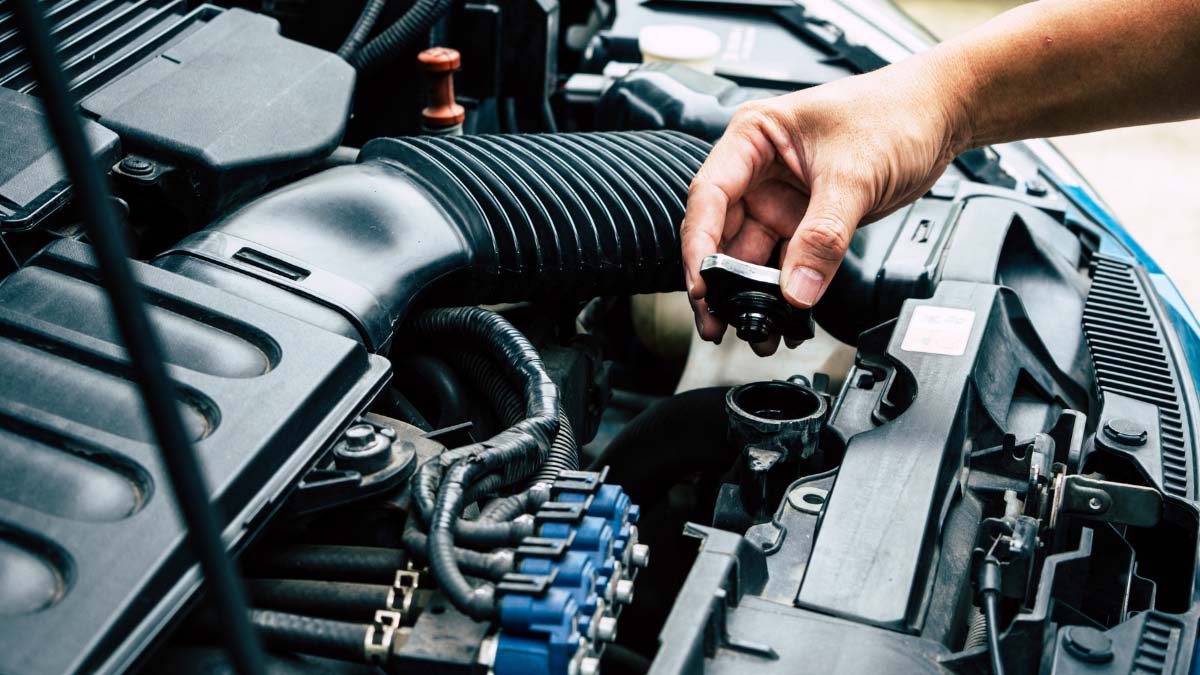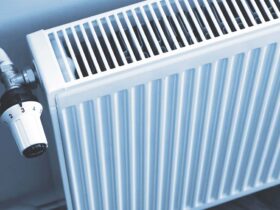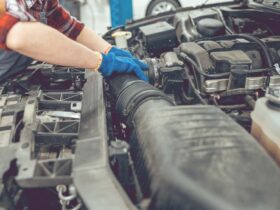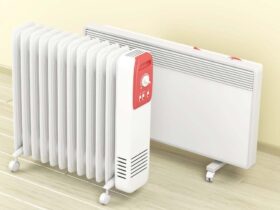Bad radiator symptoms include consistent overheating and coolant leakage. Discoloration and strange sounds also indicate a failing radiator.
Understanding bad radiator symptoms is crucial for maintaining your vehicle’s health. The radiator, an integral part of your car’s cooling system, ensures the engine operates at the correct temperature. Ignoring signs of radiator trouble can lead to engine failure and costly repairs.
Spotting the warning signs early can save you time and money while ensuring your vehicle remains in peak condition. A bad radiator impacts your engine’s performance and longevity. Keep your eyes open for these classic symptoms, and you’ll help protect your car from major mechanical issues. Always consult a professional mechanic at the first sign of radiator problems to prevent further damage to your vehicle.
The Role Of A Radiator In Vehicle Health
The radiator is a crucial part of a car’s health. It keeps the engine cool. Without it, the car’s engine would overheat. This could lead to serious damage. A healthy radiator means a healthy vehicle. Let’s look at how it works and the signs that it might be failing.
Core Functions Of The Radiator
The radiator’s job is keeping the engine at the right temperature. It does this by:
- Removing heat from engine coolant
- Helping the coolant to cool down
- Allowing cool air to flow
If the radiator fails, the engine can get too hot. This could stop the car from working.
Cooling System Mechanics
A car’s cooling system is like a team. Each part has a role. Here’s how it works:
- Coolant absorbs engine heat.
- The radiator cools the hot coolant.
- Coolant goes back to the engine.
- The cycle repeats.
Each step is key for a cool engine. If one part breaks, the engine could overheat. This is why a good radiator is vital.

Early Warning Signs Of Bad Radiator Symptoms Trouble
Keeping your car in top shape means recognizing trouble before it escalates. With the radiator being crucial for engine temperature regulation, spotting early warning signs can save you from costly repairs. Let’s explore these signs that your radiator may be heading for trouble.
Temperature Gauge Spikes
One of the most noticeable signs of a problematic radiator is a temperature gauge suddenly spiking. If the needle pushes towards the ‘H’ or red zone, it’s a clear signal your engine is overheating. An overheating engine can cause serious damage if ignored.
Inconsistent Cabin Heating
Another telltale sign is heating issues inside your car’s cabin. If the heater starts blowing cold air, or the temperature fluctuates, the radiator may be struggling. This could point to a blockage or coolant circulation problems.
Remember to act quickly when you notice these early signs. Early intervention can prevent engine damage and keep your vehicle running smoothly.
Under The Hood: Visual Symptoms
Peeking under the hood of your car can reveal telltale signs of a bad radiator. Spot these visual Bad Radiator Symptoms early to avoid major repairs. A healthy cooling system is key to your car’s overall performance. Let’s dive into the most common visual cues that suggest radiator trouble.
Coolant Leakage
A puddle under the car is a red flag. Spotting green, red, or yellow fluid on the ground signals coolant leakage. This indicates that the radiator might have a crack or a loose hose. Regular checks for wet spots or dripping can save your engine from overheating.
Rust And Corrosion
Rust means trouble. It’s a sign that the radiator is decaying from within. Check for orange or brown discoloration on the radiator’s surface. A corroded radiator can fail and leak. This can cause engine damage. Spot corrosion early to extend the life of your radiator.
Here’s a quick guide to check for these symptoms:
| Symptom | What to Look For | Action |
| Coolant Leakage | Puddles under the car, Drips from hoses | Inspect hoses and radiator for damages |
| Rust and Corrosion | Orange/Brown discoloration on the radiator, Brittle metal parts | Clean the affected area, Consult a mechanic |
Prevention beats cure. Routine inspections can catch these visual symptoms before they evolve into serious issues. Keep an eye on these areas during regular maintenance to ensure your radiator runs perfectly.

Auditory Alerts: Sounds Of Failure
Radiators are crucial for keeping your car cool. Like a fever in the human body, a car’s temperature needs constant monitoring. Odd sounds from your car can signal radiator issues. Never ignore these audible warnings; they’re your first clue something’s wrong. Let’s tune in to the Sounds of Failure and understand what they mean.
Gurgling Or Boiling Noises
These sounds can be quite alarming. Like a kettle on the stove, a radiator making gurgling or boiling noises hints at overheating. What’s happening inside? Here’s a bullet-point breakdown:
- Coolant struggling: Bubbling indicates the coolant can’t circulate properly.
- Possible leaks: Escaping air creates gurgling; check for leaks.
- Overheating engine: Boiling sounds mean the engine’s too hot and needs a checkup.
These Bad Radiator Symptoms demand immediate attention. Neglect could mean a major repair bill.
Whining From The Water Pump
Another sign of radiator distress is a whining sound. Pay attention if you hear a high-pitched noise that gets louder with acceleration:
- Water pump wear: A whine can indicate the water pump’s lifespan is ending.
- Belt issues: Sometimes the timing belt or serpentine belt, which drives the water pump, is the culprit.
- Bearing failure: The pump’s bearings may be failing, causing friction and noise.
Proactive checking can save your engine from severe damage. Listen to your car – it’s talking to you!
Physical Inspection: What To Look For
The health of your vehicle’s cooling system largely rests on the condition of its radiator. Timely physical inspections can save you from costly repairs. Knowing what to look for could be the key to a well-maintained radiator. Let’s delve into the visual checks necessary to spot potential issues.
Inspecting Hoses And Belts
Begin by examining the Bad Radiator Symptoms hoses and belts. Check for any signs of cracks or wear. Soft spots on hoses indicate weakness. Tighten loose clamps and replace any parts showing deterioration. Ensure the belts have proper tension and no fraying.
- Look for cracks on the surface of hoses and belts.
- Feel for soft spots on hoses.
- Examine clamps for tightness.
- Check tension and condition of belts.
- Replace any damaged components.
Checking For Bad Radiator Symptoms Fins Damage
Radiator fins are crucial for cooling. Inspect these fins carefully. Bent fins obstruct airflow, reducing efficiency. Clear any debris and straighten bent fins with a fin comb. Look for blockages and corrosion as these are signs that the radiator is failing.
| Inspection Area | What to Look For |
| Fin Condition | Bent fins, blockages |
| Debris | Leaves, bugs, dirt |
| Corrosion | Rust or discoloration |

Driving Patterns And Radiator Health
Understanding how your driving habits affect your car’s radiator is key to vehicle health. Certain symptoms might show up during different driving patterns. Here’s a closer look at how.
Overheating Under Load
When your vehicle works harder, the radiator does too. Towing, climbing hills, and fast acceleration can all push a radiator past its limits. Here are Bad Radiator Symptoms to watch:
- Temperature gauge spikes suddenly
- Steam from under the hood
- Engine power dips noticeably
Your car getting hot during tough drives may signal radiator troubles.
Performance During Idling
How your car acts when it’s not moving says a lot about its radiator. Paying attention to these signs while idle can help:
- Coolant levels dropping without visible leaks
- Unusual noises like bubbling or knocking
- Temperature gauge edging toward the red zone
These symptoms suggest the radiator isn’t cooling effectively in all conditions.
The Impact Of Coolant Discoloration

Your car’s radiator plays a crucial role in keeping the engine cool and running smoothly. When the coolant in your radiator changes color, it’s often a sign of underlying issues. This discoloration can indicate contamination, which may lead to reduced cooling efficiency and potential engine overheating. Understanding what causes this change in color can help you prevent long-term damage to your car’s engine.
Identifying Contaminated Coolant
Spotting bad coolant is simple. Look for these clear signs:
- Unusual color: Coolant typically has a bright green hue, but can also be orange, pink, or yellow when new.
- Cloudy appearance: Contaminants cause cloudiness.
- Floating particles: Deposits or rust mean trouble.
Checking your coolant regularly helps catch these signs early.
Causes Of Coolant Color Change
| Color Change | Possible Causes |
| Brown/Black | Rust or engine gasket leak |
| Oil Contamination | Blown head gasket |
| Reddish | Transmission fluid leak |
Keep in mind, different coolants have different shelf lives.
Check your owner’s manual for the right coolant type and change intervals.
Consequences Of Neglecting Radiator Repairs
A radiator in disrepair spells trouble for your car. Your vehicle’s radiator is crucial for engine temperature regulation. Ignoring its maintenance can lead to severe issues. Regular check-ups prevent costly damage. Understanding the stakes involved ensures diligent radiator care.
Reduced Engine Longevity
Take radiator health seriously to ensure your engine’s lifespan. Radiators keep engines cool to prevent overheating. Poor maintenance shortens engine life significantly.
- Overheating: Leads to engine wear.
- Corrosion: Causes parts to break down.
- Leaks: Engine parts dry out, crack.
Potential For Catastrophic Engine Failure
Let me paint a picture: a neglected radiator could blow your engine. It’s no exaggeration. A failing radiator raises the risk of engine meltdown. This catastrophic failure is both dangerous and expensive.
| Problem | Consequence |
| Extreme overheating | Engine warps, stops working. |
| Coolant mixture wrong | Parts corrode, fail faster. |
| Consistent low coolant | Overheating without warning. |

Maintenance Tips To Prevent Bad Radiator Symptoms
A healthy radiator ensures your car stays cool under the hood. Radiators face wear and tear. Proper upkeep avoids breakdowns.
Regular Coolant System Flushes
Regular flushing keeps the cooling system efficient. Over time, coolant loses efficacy.
- Check manufacturer’s guidelines for flush frequency.
- Use the correct type of coolant for your vehicle.
- Inspect for leaks during flushes.
A flush involves draining the old coolant, cleaning the system, and refilling with fresh coolant.
Immediate Attention To Minor Issues
Small problems can escalate if ignored. Early detection saves money and stress.
- Watch for warning signs: overheating, leaks, or odd smells.
- Check hoses and clamps during oil changes for wear and tear.
- Fix minor issues promptly to prevent major repairs.
Attentiveness to these details prolongs radiator life.
Frequently Asked Questions On Bad Radiator Symptoms
How Do You Know If A Radiator Is Bad?
You can identify a bad radiator by observing signs like overheating, coolant leakage, sludge in the radiator, and inconsistent cabin temperatures. Regular inspection helps detect these issues early.
How Do You Know If You Need A New Radiator?
You may need a new radiator if it leaks coolant, overheats consistently, shows sludge in the coolant, or if corrosion and damage are apparent.
Can A Radiator Be Bad Without Leaking?
Yes, a radiator can be malfunctioning without leaking. Internal clogs or corrosion can impair cooling efficiency without any visible signs of a leak.
What Happens If You Drive With A Bad Radiator?
Driving with a Bad Radiator Symptoms can lead to engine overheating, potential engine damage, and reduced performance. This may also cause a breakdown or costly repairs.
Conclusion
Recognizing bad radiator symptoms is crucial for vehicle health and safety. Overheating engines, leaks, and discolored coolant are clear signals. Tackle these issues promptly to avert costly repairs. Stay vigilant and ensure your radiator functions optimally to keep your journeys smooth and trouble-free.
Drive smart, stay informed, and maintain regularly for uninterrupted road adventures.





